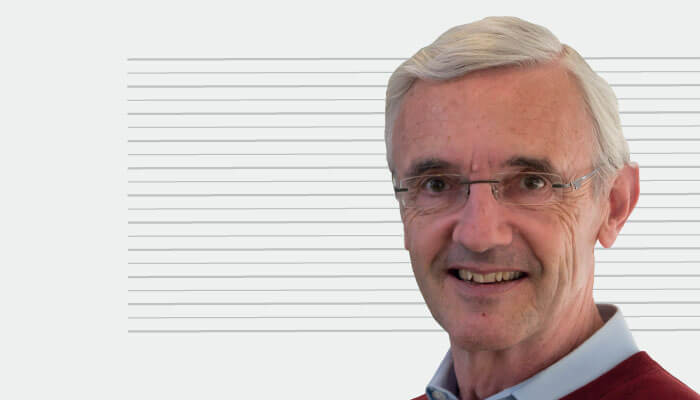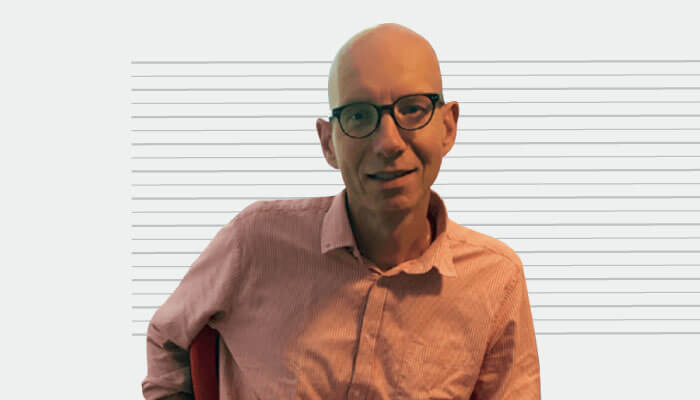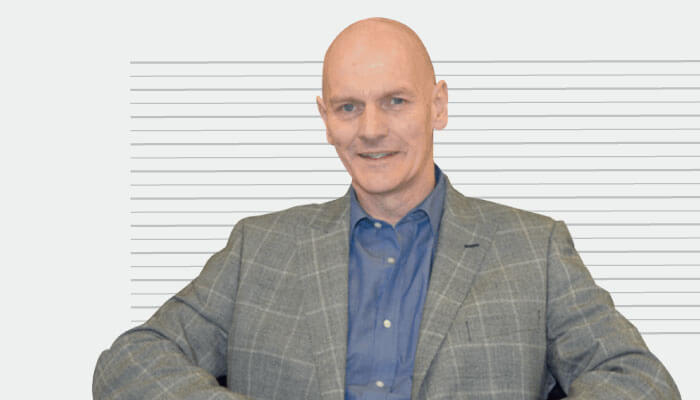Between holding a special chair for analytical chemistry at Wageningen University, having acted as president for the Dutch Society of Mass Spectrometry and playing the role of principal scientist for WFSR, Michel Nielen has held many prestigious positions. Today, having been cited over 8,000 times for his work in numerous analytical technologies, Michel acts as both an executive board member for TI-COAST (a Dutch public-private analytics body) and coordinator of the EU Marie Curie Innovative Training Network FoodSmartphone, a PhD program focused on the research and development of handheld food analyzers. The production of such handheld devices represents a primary research focus for Nielen, who believes they will improve food safety by facilitating the collation of geographically tagged food quality data by stakeholders throughout the food chain, including consumers.

Hans-Gerd Janssen is perhaps best known for his comprehensive chromatography workflows, designed to give high-resolution molecular information from complex samples, such as food and cosmetics. During his time at the University of Amsterdam and as Science Leader for Unilever Research Vlaardingen, Janssen has contributed to hundreds of studies, and recently received a groundbreaking grant from VUV Analytics for the application of vacuum ultraviolet detection to transform the study of mineral oil saturated and aromatic hydrocarbons in consumer products. The goal? To continue innovating our analytical capabilities to unravel the identity of molecules in samples and understand the behaviors and capabilities of these molecules in real-world contexts.

Chris Elliott is the founder of the Institute for Global Food Security at Queen’s University, Belfast, and Director of the ASSET Technology Centre. He currently coordinates the flagship Horizon2020 project – a collaborative effort to tackle food safety issues involving 16 European and 17 Chinese partners – and played a central role in the QSAFFE study of contaminant issues across Europe. What’s more, he led the UK government’s food system review in response to the 2013 horsemeat scandal, is an elected Fellow of the Royal Society of Chemistry, Royal Society of Biology and the Institute of Food Science and Technology, and co-founded the International Drug Residue School of Nante, France. It’s clear to see why he was awarded the OBE – among numerous other awards – for his extraordinary contributions to this field.

What breakthroughs have had – or will have – a key role in food authenticity?
Michel Nielen: Modern chromatography-MS approaches are perhaps most applied in the detection of food contaminants, from pesticides to antibiotics and natural toxins. These processes make use of the latest column technology, and have played a central role in the expansion of full-scan accurate mass MS techniques; this latter technology, coupled with advanced chemometrics tools, enables food profiling to detect authenticity and fraud issues. Human biomonitoring studies have also emerged in recent years to assess the bodily exposure related to these contaminants.
Hans-Gerd Janssen: Our food is safer and of higher quality than ever before, and we owe this largely to advances in analytical chemistry – both in terms of emerging methods for food monitoring and cooperation with experts involved with food processing, chemistry, and production. As Michel mentions above, tools that allow scientists to monitor regulated compounds – including pesticides and process contaminants – are key, and are in a constant state of improvement with regards to their speed and reliability. In fact, MS instrumentation has advanced to the point that researchers are now able to monitor more unique compounds in a single sample than ever before. Coupled with improving resolution and the integration of -omics, there are a number of reasons that our ability to analyze food is improving so noticeably.
Michel Nielen: The historical dominancy of GC- and LC-MS in food analysis is due, at least in part, to legislation dictating that such evidence be provided through these techniques. Sooner or later, though, I would expect novel enabling technologies to be integrated into these regulations; this is why RAFA has always focused both on emerging analytical technologies and inventive food analysis workflows.
Given the large variety of food matrices and their inherent heterogeneity, sample preparation is also a topic of considerable interest at RAFA – and beyond.
RAFA 2019 will showcase major developments in portable, rapid and non-invasive instruments, often referred to as “food scanners,” which are expected to facilitate a massive increase in the number of food samples we’re able to test. Optical spectroscopy (such as hyperspectral UV scanners covering visible and near-infrared wavelengths with image recognition) is a great example, and is experiencing a resurgence in food studies due to successful instrument miniaturization, the availability of advanced chemometric data handling tools, wireless data communication and Big Data compatibility – in many cases, ordinary smartphones will provide a readout system. What’s more, major developments in biochemical assays, such as strip tests, lateral flow devices, and biosensors will be showcased at the meeting, as will advances in portable MS – though these tend to move more slowly in food analysis than other fields.
What will your presentation at RAFA 2019 focus on?
Michel Nielen: For me, the message to convey at RAFA is clear: within the next decade, food inspectors, farmers, retailers, and even consumers, will be demanding the ability to test food themselves. To this end, I anticipate that rapid, smartphone based technologies with built-in and remote quality assessment features will supersede laborious laboratory practices – delayed action due to analytical limitations will not be acceptable. These events will trigger a paradigm shift: labs will move from dealing with high numbers of compliant samples to fewer, more interesting samples that have been identified as suspicious. Such a shift may even provide an opportunity to pinpoint completely new food contaminants and metabolites.
Chris Elliott: Food integrity is a multifaceted field that I summarize using seven key principles: that the food we eat is safe, authentic and nutritious, is produced to the highest ethical standards and in a sustainable way, and that we respect our planet and those who work in the global food supply system throughout production. Of course, each principle is faced with a number of challenges, and many of these have wide-reaching implications... A full risk assessment will be required to fully understand what challenges we will face in ensuring safe food against a backdrop of climate change and growing levels of organized crime penetrating the food industry.
No food commodity or ingredient is safe from adulteration, and new cases of food fraud seem to be reported on a near-weekly basis. There are those who will always seek to find new ways to cheat the system for their own profit, and current reports of fraud in the rice trade are particularly worrying. Sadly, such cases should almost be expected - as the most consumed food worldwide with associated complex supply chains, the rice trade is ripe for exploitation.
Scientists play a major role in detecting food fraud using applicable analytical technologies, but there is no “one size fits all” technique for every problem we face. The development of a “toolbox of techniques” that exploits different measurement technologies is an ongoing process. Yet, analysis alone cannot eliminate food fraud completely; testing programs must be part of much broader control measures that incorporate robust audits and excellent tracking and tracing systems.
Our efforts should be directed towards developing the capabilities to undertake field-based testing for food fraud. Innovations in sensor technologies, smartphone-based analysis and portable MS are exciting new avenues for exploration – no doubt, all of these instruments will find their place in the larger technical toolbox of the future.
Michel Nielen: Realizing the visions discussed by me and Chris will require the miniaturization of tandem MS, as optical and biochemical food scanners are already developing rapidly. The high numbers of regulated pesticides and antibiotics in complex food matrices and the relatively low legal limits will require analytical selectivity and sensitivity currently unavailable in portable MS; once developed, however, portable triple quadrupole MS may be adopted relatively quickly because of similarities with current laboratory workflows and regulatory requirements.
What challenges are shaping the field today?
Chris Elliot: It depends what part of the world you herald from! In Europe, we all remember the horsemeat scandal of 2013; in China, it is the 2008 melamine scandal that has left its mark, resulting in a loss of trust among the Chinese population regarding their national food system. Such cases have led to a shift away from classic targeted methods of analysis to untargeted methods, which has been possible largely due to advances in chemometrics. These developments (often referred to as "food fingerprinting" methods) mean that the detection of food adulteration is much more likely, no matter what substances the fraudsters uses.
Of course, we can all do better to tackle this problem… But it is clear that being able to detect and stamp out food fraud has an enormously positive effect on society; not only does it prevent consumers from exposure to fraud, but it also helps ensure their safety.
Our changing climate, characterized by rising temperatures and issues with water sustainability, poses the greatest threat to the integrity of the global food supply system. We may well suffer multiple food safety and fraud issues as a result, will potentially need to use more agrichemicals to control pests, and will face greater challenges from natural contaminants, such as fungal and plant toxins.
Michel Nielen: Food analysis is an ever-evolving field, but the aforementioned classical contaminants, as well as natural toxins, remain areas of enormous interest. In contrast to pesticides and antibiotic residues, which present as a priori, known substances, natural toxins present a very different challenge; their abundance and chemical diversity, coupled with a lack of purified standards (and associated internal standards), present many levels of complexity.
The focus of analytical scientists working on these toxins was initially well defined – mainly mycotoxins and a few shellfish toxins. Nowadays, however, it is important to also consider plant and bacterial toxins. Advances in method development have been boosted by scandals as discussed above, among others. These developments have relied on both non-profiling technologies and advanced data mining tools, both of which have advanced considerably in recent years.
Hans-Gerd Janssen: These are all very valid points, and alongside these developments we are also witnessing a major shift in consumer behavior. Food must be available anywhere and at all times; in addition, it must be free of e-numbers, natural – or vegan – in origin, sustainably produced and sustainably packed, and incorporating increasingly desirable ingredients. Meeting this demand will require faster product development, as well as studies into new natural ingredients, natural preservatives, and new ways of inhibiting lipid oxidation. And that will require analytical support and measurement that goes beyond simple data production – we need to generate new knowledge.
Every change to a recipe, processing methods or packaging can have consequences for the quality and safety of products. The answer? Analytical chemistry. Our field provides the tools to detect these differences and assess their subsequent impact, essentially forming the basis of our entire understanding of the topic.
And yet, despite progress, we still face many challenges. For instance, we lack the proper instrumentation to ensure food authenticity... How can we prove that organic food is indeed organic, or vegan food vegan? Many of the measurements needed to answer such questions require well-equipped laboratories with trained experts and state-of-the-art equipment.
Rather than spending time, effort, and resources developing even more advanced laboratory instruments, we need to turn our attention elsewhere. There is a clear need for small, easy-to-use instruments that employ selective chemistries; in an ideal world, as Michel suggested earlier, consumers should be able to perform these measurements themselves.
Michel Nielen: Another food contaminant we are becoming increasingly aware of is microplastics – little is known about their effects, both in terms of human health and the environment; we need better analytical methods for their detection in food matrices. The same holds true for non-intended added substances (NIAS), which migrate from packaging into foods. As society continues to grapple with ensuring the circulation and recycling of materials, this will inevitably cause further NIAS contamination.
Hans-Gerd Janssen: Society faces enormous challenges. Feeding an ever-growing population sustainably will require new sources of raw materials – each of which will require characterization. At the same time, we face issues with food waste; one third of food produced is wasted instead of consumed. It would seem that myself, Michel and Chris are all aligned in thinking that we need to develop the tools to rapidly assess food quality and safety in the supermarket and at home. In many cases, we already know the appropriate chemical markers. For example, histamine is a marker for fish freshness, and hexanal is a marker for fouling lipids. Moving forwards, we require further advances in the tools used to measure these molecules so that we can do so with increased selectivity and sensitivity.
What broader challenges face the field of food integrity today?
Chris Elliot: We are lacking systems and frameworks that would ease collaboration between governments and the food industry. The sharing of important and confidential information also remains a massive challenge – only in the UK have the correct systems been put in place to facilitate this, and this was only as a direct response to the horsemeat scandal. Then there is the problem of priorities. Though many governments realize that food fraud is an issue, they are unable – or unwilling – to invest in the types of systems required to protect their citizens from this menace, and the organized crime underlying it.
Michel Nielen: There is a lack of trust surrounding measurement science and its communication. “Measuring is knowing” – but only if we can trust the validity of the data and the officials and scientists communicating it. It’s easy to imagine a future society in which everyone has the ability to conduct food analysis. I do not doubt that consumers would trust themselves in spite of the poor-quality device they might use to conduct it, and in whatever fashion they would apply it. Nevertheless, the ability to immediately communicate unreliable test results on social media could also have serious consequences; blaming and shaming the food industry or government food testing administrations. The consequence? A decline in trust in analytical measurements – irrespective of how, when and why a test has been performed. We must work together to ensure these tests are validated, have built-in quality assessment and control features, and are communicated fairly. Only then can we protect the public while maintaining current faith in analytical measurements.




